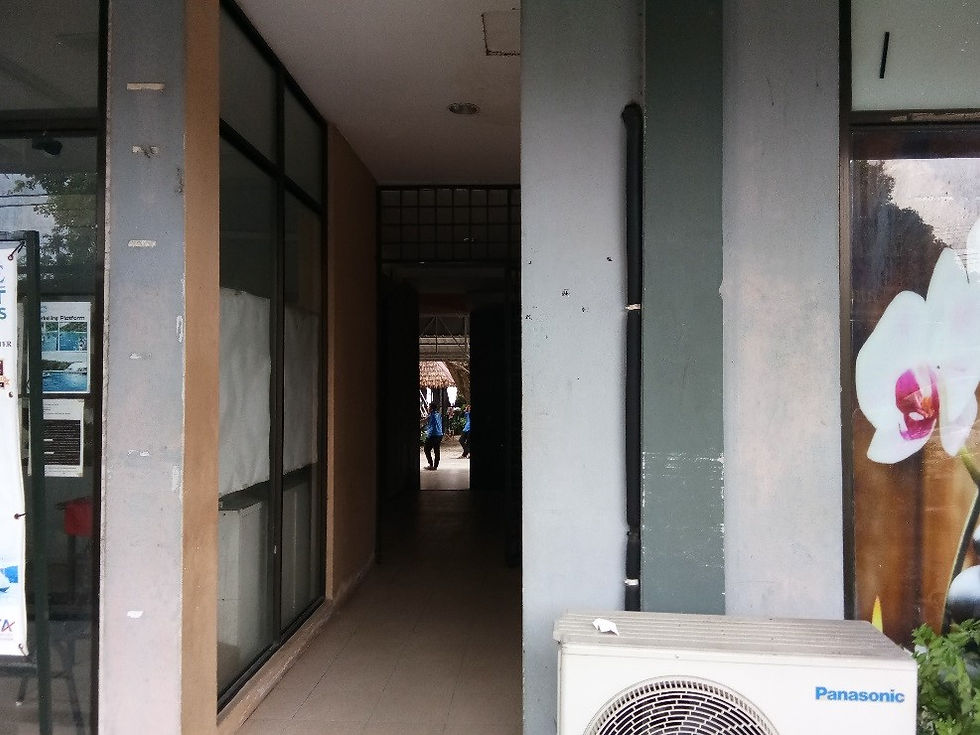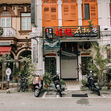Streets : For People or Profit?
- PEREKABANDAR

- Oct 6, 2020
- 5 min read
The street is an important public realm, it is a social space as well as contributing towards economic. The contribution and significance of streets could be dated back from the earliest period before the introduction of motorized transportation after the Industrial Revolution. In some country, the street becomes a popular space not only for locals but attracting tourist where it boosts the economy of a city. For example, La Ramblas in Barcelona, a 1.2 km street/boulevard with interesting pedestrian zone, aesthetically pleasing, iconic landscaping and mix of activities. La Ramblas has contributed to the economy by giving the right of using the public space to the pedestrian which in turn attracting more people. This is basic of social life, as Whyte said; “what attracts people most, it would appear, is other people”. This is an important example where street can be used as part of tourism and has been applied in many cities. There are principles that can be applied or adopted as long as it did not change the local character and sense of place in the name of tourism.
The street belongs to the people, to the pedestrian where they should be able to walk and appreciate their surroundings. These include physical and visual quality along the street. Urban form is part of the contributing elements in creating a quality street where the shape and sizes of the buildings influence the character, permeability, connectivity, especially at the ground floor level. Not only that, the architecture of the buildings along the street does affect one’s senses and creates memories or reflect a certain association. As Urban Design is concern about spaces in between buildings for pedestrian, it should be part of design guideline. Without concern and critical review on this, the overall urban form will not enhance but rather killing the space or street quality for the pedestrian. It will lose its charm and meaningless.
We know that tourism is an important contributor but there should be some framework, guideline and policies which should be well planned, executed and monitored. One of a disastrous example of a street is Jalan Pantai Cenang in Langkawi. This is a classic example of a street which has been manipulated for the sake of tourism and economy. Jalan Pantai Cenang is in the busiest beach town in Kedawang District, Langkawi. It used to be a simple beach town with trees lining the street and small buildings without any obstruction towards the sea. The sea breeze could be felt from the street and the smell of sea ignite your senses. Even the glorious sunset is visible. All these are only in memories for those who have been there before the street is blocked by buildings. In the name of development, Jalan Pantai Cenang is nothing more just like other beach towns like Batu Ferringhi in Penang or Patong, Phuket. There is no more character, no more looking at the white sandy beaches from the street. What you see is evidence of no design framework, no masterplan, no guideline and no enforcement.
The only effort is converting the street into a one-way street with sidewalk and pedestrian crossing. Only these basic elements for the pedestrian, but what about the quality, the sense of place, what about creating memories and making walking on the sidewalk is a different experience from walking on the streets in Phuket or in Batu Ferringhi? Nothing. What we got is overdevelopment with no standard setback, coarser solid and void (or should we say only solids, coz there is no more void?). Buildings are too close to one another until there is no provision of spaces in between for pedestrian to access. There is only minimum width without good space quality. There is no consideration from the building owner and no enforcement from the authority.
There are so much more could be done here if we really care about creating an iconic street for a beach town. There should be SWOT analysis done by the Local Authority if they are really serious about making this area a potential zone for tourist without exploiting it in this manner.

Location of Jalan Pantai Cenang (source: Google Map)

Shops along Jalan Pantai Cenang without any significant architectural character and visual quality (Author, August 2020)
Lack of local character to associate with that makes walking here is similar to other streets that are packed with shops that selling the same goods.

Sidewalk design which is typical, we can learn better from Kuching Waterfront’s design (Author, August 2020)
If more consideration is given, we could see beautiful shaded trees along this street, more pedestrian priority street with time zone for vehicles. It could create a more pedestrian-friendly street with comfort and aesthetic quality. Even the pavement could be design with local motives or something significant about this legendary island. It will be an interesting walking experience that tourist will talk about.

Sidewalk which is not really for pedestrian but more like for business owner (Author, August 2020)
There is a provision of the sidewalk but it could have been done better than this. More consideration on local climate, culture and landscape quality.

New building under construction with no consideration on the sense of enclosure and visual accessibility from the street (Author, August 2020)
What a shame for not having to see the beach as the name is ‘Jalan Pantai Cenang’. Visual accessibility is poor along this street especially with this kind of new development which is not sensitive towards its surrounding and natural elements. Local Authority could be questioned on their competency and enforcement here.
There is also no pocket space for pedestrian such as a pocket park for the pedestrian to rest and enjoy the view. Less and less green area except for trees along the street which is dying.

The only view towards the beach that pedestrian could appreciate while walking on the sidewalk (Author, August 2020)
This is another example of they treat the visual quality, it is dark, it is narrow and poorly designed. Why are we concerned about making the street not only lively but we want to create a space for the people to use with good physical and visual quality. There is no doubt that this town will keep on expanding in the future. Without any reminder of what happened in other cities, we are definitely repeating what they have done wrongly. We are afraid other issues in urban design will arise, by then the effort will have to be on finding the remedies. This is the time that we need to really look into designing a proper street which indirectly will contribute to tourism. Many of our waterfront cities are destroy due to insensitive development and hope that this area would not be another victim.
Article by,
Suhaila Abdul Rashid











Comments